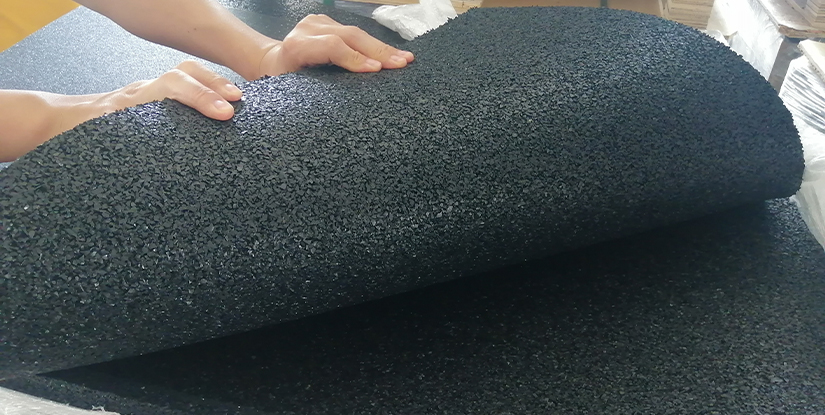Wall Mount Yoga Mat Holder | Durable Space-Saving Storage

Overview
A wall mount yoga mat holder is a practical, space-efficient solution for organizing and protecting yoga mats in both home and commercial environments. Designed to secure one or multiple mats off the floor, these holders improve accessibility, extend mat life, and contribute to a tidy, professional practice space.
Key Benefits
- Space optimization: Frees floor area, making small studios and home gyms feel more open.
- Protection: Keeps mats clean, dry, and away from foot traffic or equipment damage.
- Accessibility: Easy to reach and return mats before and after sessions.
- Professional appearance: Uniform storage enhances studio aesthetics and brand perception.
- Customizable: Available in styles and finishes to match décor and capacity needs.
Materials & Construction
High-quality wall mount yoga mat holders are typically constructed from powder-coated steel, stainless steel, or hardwood. Each material offers distinct advantages:
- Powder-coated steel: Durable, cost-effective, resistant to scratches and moisture.
- Stainless steel: Ideal for humid environments; resists rust and requires minimal maintenance.
- Hardwood: Provides a warm, natural aesthetic; best for lighter loads and controlled environments.
Design Features to Consider
- Capacity: Single-mat racks vs. multi-mat systems for studios that need centralized storage.
- Mounting type: Fixed brackets for permanent installation or modular systems for flexible layouts.
- Padding and contact points: Soft or rubberized contact areas prevent mat abrasion.
- Security: Lockable options for high-traffic locations or shared spaces.
- Finish: Corrosion-resistant coatings and smooth edges for operator safety.
Installation Guide
Proper installation ensures safety and longevity. Follow these professional steps:
- Locate studs: Use a stud finder to secure the holder to structural framing for heavy loads.
- Choose appropriate anchors: For concrete or drywall without studs, use heavy-duty anchors rated for the combined load.
- Level the bracket: Use a bubble level to ensure alignment; uneven mounts can cause stress and premature wear.
- Torque specifications: Tighten fasteners to manufacturer's torque recommendations; avoid over-tightening wood screws.
- Test load: After installation, load the intended number of mats and inspect for movement or deflection.
Placement & Ergonomics
Position holders at a height and location that minimize bending and reaching. For shared facilities, place racks near class entry points or changing areas to streamline flow. Leave at least 24 inches of clear space in front of the holder to allow comfortable removal and replacement of mats.
Maintenance & Care
- Regular inspection: Check mounting hardware quarterly and tighten as necessary.
- Cleaning: Wipe metal and wood surfaces with a mild detergent; avoid abrasive pads that damage finishes.
- Rust prevention: For metal holders in humid areas, apply a protective coating periodically or choose stainless steel.
- Surface protection: Replace worn rubber pads to prevent mat slippage and surface damage.
Buying Guide
When selecting a wall mount yoga mat holder, evaluate the following criteria:
- Capacity needs based on class size and storage strategy.
- Material durability relative to environment (humidity, saline air, heavy use).
- Ease of installation and compatibility with existing wall structure.
- Warranty and manufacturer support for commercial installations.
- Design integration with studio aesthetics and branding.
Use Cases
- Yoga studios: Centralized mat storage for classes; multi-tier systems maximize capacity.
- Gyms and fitness centers: Durable holders withstand frequent turnover and mixed equipment areas.
- Home studios: Single or dual-mat holders provide tidy storage without extensive installation.
- Wellness centers and spas: Elegant wood or stainless options complement upscale interiors.
FAQs
- What is the typical load capacity? — Most commercial holders support 10–50 mats depending on design.
- Can I install on drywall? — Yes, but use rated anchors or mount into studs for heavy loads.
- Is stainless steel necessary? — Recommended for humid or coastal environments to prevent corrosion.
- How high should it be mounted? — Mount at a height that minimizes bending; typically 36–48 inches from the floor.
- Are there lockable options? — Yes, some models include locking mechanisms for shared spaces.
- Do holders damage mats? — Quality holders have padded contact points to prevent abrasion.
- Can holders be customized? — Many manufacturers offer custom finishes and capacities for studios.
- What maintenance is required? — Quarterly hardware checks and periodic surface cleaning.
- Are wall-mounted holders safe in public studios? — When properly installed and maintained, they are a secure storage solution.

